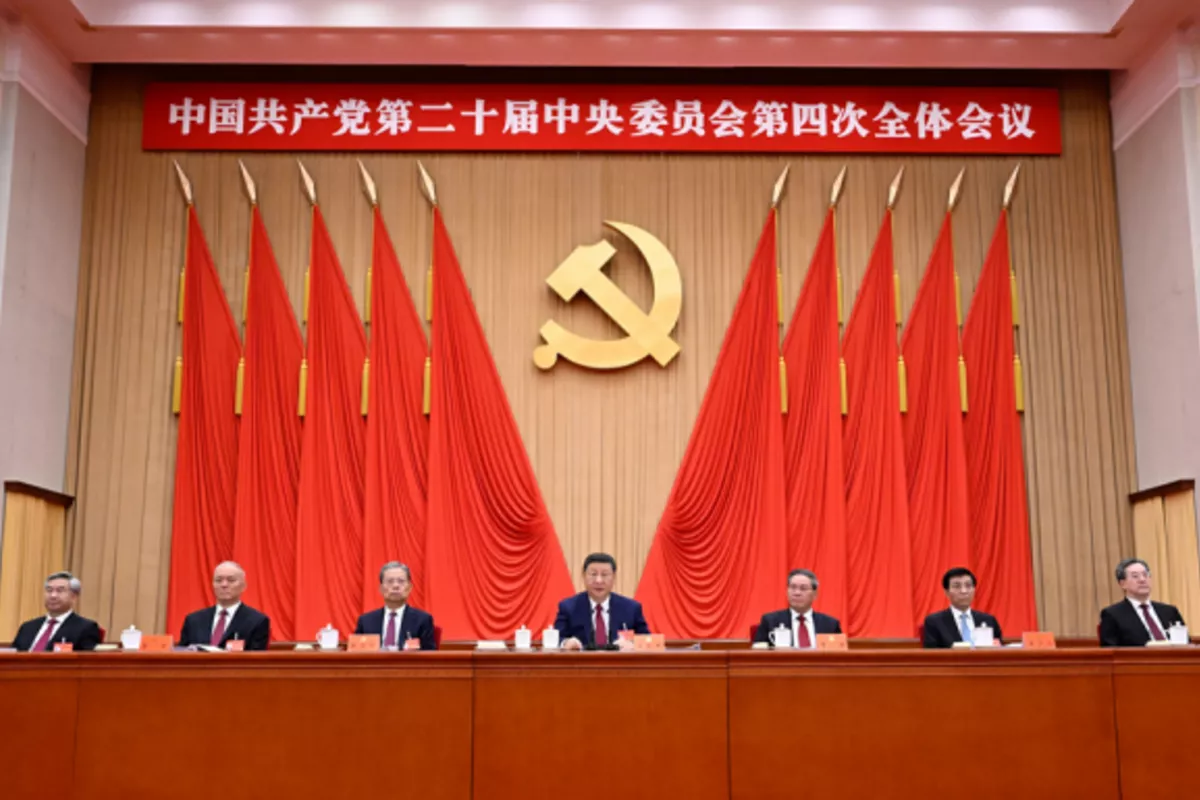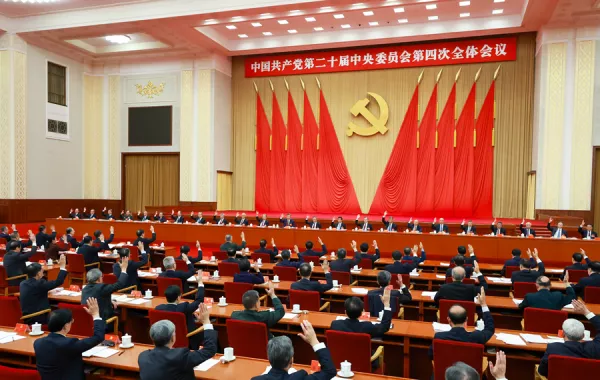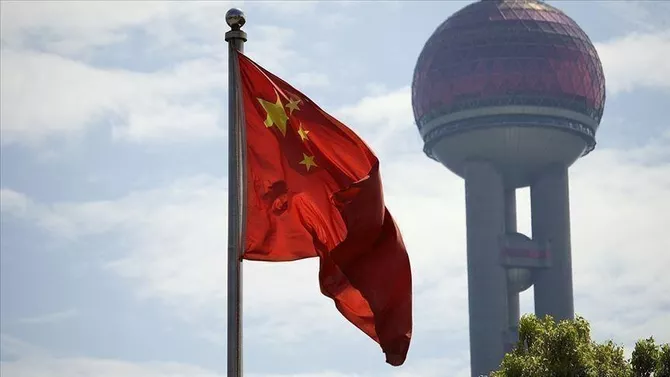
Photo: fmprc.gov.cn
From October 20 to 23, Beijing hosted the Fourth Plenary Session of the Central Committee of the Communist Party of China. The key focus of the meeting was preparing proposals and developing a comprehensive strategy for China’s socio-economic development under the 15th Five-Year Plan. In essence, the session marked an important ideological and administrative milestone, defining the country’s direction for the next five years.
The session assessed the major achievements of the 14th Five-Year Plan, describing them as significant and transformative. This period presented serious challenges: China repeatedly faced foreign policy pressures, crises, and global geo-economic disruptions.
Despite uncertainty and external turbulence, the country not only endured but demonstrated impressive growth dynamics, reaffirming the resilience of socialism with Chinese characteristics.

Photo: fmprc.gov.cn
In an era of geopolitical turbulence and rising international tensions, the 15th Five-Year Plan will not be easy. Beijing must again prove that its position as the world’s second-largest economy is concrete, not symbolic. China’s economic foundation remains robust, supported by a strong state sector, large-scale infrastructure investments, and ongoing technological modernization. Socio-political stability and ideological cohesion remain the cornerstone of domestic governance, ensuring the system’s adaptability amid global shocks.
Ahead of the CCP centennial celebrated in 2021, China set a long-term strategic goal: the creation of a fully modern socialist nation. That goal has largely been achieved, establishing a solid foundation for a new phase of modernization. Now, under the 15th Five-Year Plan, objectives are being elevated based on previous successes and extended toward long-term development targets set through 2035.
At the plenary session, President Xi Jinping presented explanations regarding the Proposals of the CPC Central Committee for Formulating the 15th Five-Year Plan for National Economic and Social Development. Following the meeting, a communiqué outlined the core priorities of the new blueprint and the rationale behind the political and economic decisions being adopted.
Over the next five years, China will continue emphasizing a human-centered development model. The people will remain at the core of the Party’s work, reflecting the principle: “everything is for the people, and everything depends on the people.” At the same time, reforms will deepen, national security will be strengthened, and technological independence will remain a key priority.
By 2035, China aims to significantly expand its economic scale, strengthen its international influence, and raise GDP per capita to the level of moderately developed economies.
The new plan envisions intelligent, green, and integrated development. This includes promoting new-type industrialization, advancing leadership in high-tech sectors, developing space programs, transportation, artificial intelligence, and digital infrastructure. The goal is to establish China as a global leader in smart manufacturing and digital transformation, making the Digital China program a strategic priority.
Building a strong domestic market has become a core pillar of sustainable growth. In parallel, Beijing will continue its policy of high-level opening-up. Chinese media have emphasized that the country must “steadily expand institutional opening-up, safeguard the multilateral trading system, promote international circulation, and advance reform and development through openness, sharing development opportunities with all nations, and pursuing common prosperity.”
These principles align with the concept of “a community with a shared future for humanity,” which China actively promotes globally. The Belt and Road Initiative also fits within this framework, serving as a mechanism for international cooperation and peaceful economic coexistence.
The 15th Five-Year Plan continues efforts to eradicate poverty, modernize agriculture, and improve the well-being of rural residents - measures essential for boosting domestic consumption and maintaining social stability. Another emerging priority is developing the cultural sector to increase the global presence of Chinese culture and enhance China’s soft power.
Green transformation is a central pillar of the new agenda. China is accelerating its transition to a low-carbon economy, guided by the principle: “clear waters and green mountains are invaluable assets.” In the coming years, the country plans large-scale development of renewable energy, green construction technologies, and sustainable infrastructure, all aimed at building a “Beautiful China.”
National security remains a key priority. China is modernizing its defense architecture to build a “Peaceful China.” Ahead of the 100th anniversary of the People’s Liberation Army, Beijing aims to fully modernize national defense and the armed forces, ensuring the country can effectively respond to external threats.
The 15th Five-Year Plan marks a pivotal stage toward achieving the strategic modernization goals set for 2035. It signals a shift from quantitative growth to qualitative development: strengthening technological sovereignty, boosting domestic demand, and maintaining engagement with the global community. High-quality growth entails structural transformation toward high-value industries, enhanced competitiveness, and a strong commitment to innovation.
Technological self-reliance will require large-scale investment and state support in sectors such as AI, microelectronics, and biotechnology. Expanding domestic demand involves stimulating consumption and reforming social sectors including healthcare, education, and welfare.
Analysts note that the 15th Five-Year Plan reflects the pragmatism and continuity of Xi Jinping’s governance. It addresses two key challenges: vulnerabilities in external technology supply chains and weaknesses in domestic consumer demand. Beijing continues to pursue the formula: “technological autonomy + domestic market + green transition.”
The declared goals are ambitious, yet history shows that China has repeatedly achieved complex objectives and translated plans into tangible results.

Photo: Getty Images
The 15th Five-Year Plan is more than a roadmap: it is a strategic blueprint outlining China’s aspirations by the middle of the 21st century - a modern socialist nation where economic power is inseparable from social justice, technological leadership, and sustainable development.
This strategy demonstrates China’s determination to follow its own path, regardless of external pressure, trade restrictions, or attempts at isolation. China seeks a development model capable of operating autonomously while integrated into global processes - not isolated, but part of a new framework of international cooperation.
In this context, the Five-Year Plan becomes an instrument for shaping the “China of the 21st century” - technologically independent, socially resilient, and environmentally balanced, offering an alternative development paradigm for the Global South.
Step by step, Beijing is transforming economic planning into a component of geopolitical strategy. Today, China’s Five-Year Plans are not only internal guidelines; they also send signals to the world: China is ready to assume greater responsibility, pursue balance between development and security, reduce vulnerabilities, and strengthen scientific and technological sovereignty.
Since entering a new era - from a commitment to peaceful development to advancing global partnerships and building a shared future for humanity - China has consistently demonstrated its readiness to shoulder responsibility at critical historical moments, uniting the world through Chinese ideals and becoming a source of stability in global governance. Whatever changes may come, China remains open to cooperation with all countries, a driver of cultural exchange, an advocate of peaceful coexistence, and a committed participant in building a shared future for humanity.
Share on social media